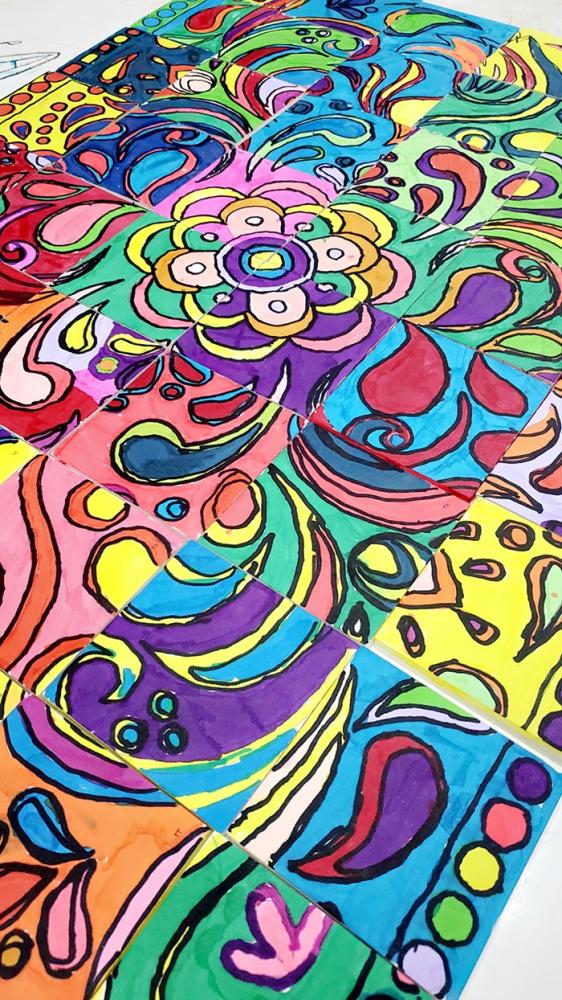
Idea Description:
A collaborative artistic endeavor involving a group of individuals (students). Participants, or their leader, agree on or determine specific materials and tools to achieve artistic harmony in creating a single piece of work.
Educational Benefits of Group Art Projects:
Enhancing Collaboration: Group art projects foster collaboration among group members, teaching them how to work together to achieve a common goal.
Fostering Creativity: Group art projects help in nurturing creativity among members, encouraging them to generate new and unique ideas.
Problem-Solving Skills: Engaging in group art projects teaches members how to solve problems, helping them to face and overcome challenges.
Enjoyable Experience: Group art projects provide an enjoyable experience for members, where they feel happiness and satisfaction upon completing the artwork.
Features of Creativity and Collaboration Squares:
Variety of Themes :Themes can be chosen based on the lesson topic or occasion, whether national, social, or international.
Opportunity for Competition:This idea can serve as a competitive opportunity where different groups create their own artwork to compete with others.
Multiple Fields and Materials: This project can be executed in various artistic fields, such as painting with different types of colors, using wood, carving, and modeling with clay.
Consideration of Individual Differences: All skill levels can participate in creating the unified artwork, where weaker contributions blend into the stronger ones in a single piece.
Opportunity to Activate Student Activities: This idea can be implemented as a competitive activity in contests among specific groups, making it an innovative idea that contributes to enhancing school activities with excellent outcomes.
Steps to Implement the Idea:
1. Design Selection:Choose a design for the group art project, which can be simple or complex, depending on the group's skill level.
2. Divide the Designed Work into Squares: Cut the design into squares of a specific size.
3. Determine Materials and Tools: Select the materials and tools to be used in the group art project, which can vary from colors, papers, wooden tools, metal tools, and more.
4. Task Distribution:Assign tasks to group members, where each member is responsible for executing a part of the design.
5. Execute the Artwork:Group members execute the artwork according to the predetermined design and assigned tasks.
6. Art Display: Once completed, the group artwork can be displayed in an exhibition or another location.
Conclusion:
Group art projects are a beneficial educational activity for members, helping them develop their skills and abilities, learn new things, and enjoy a pleasant experience.

